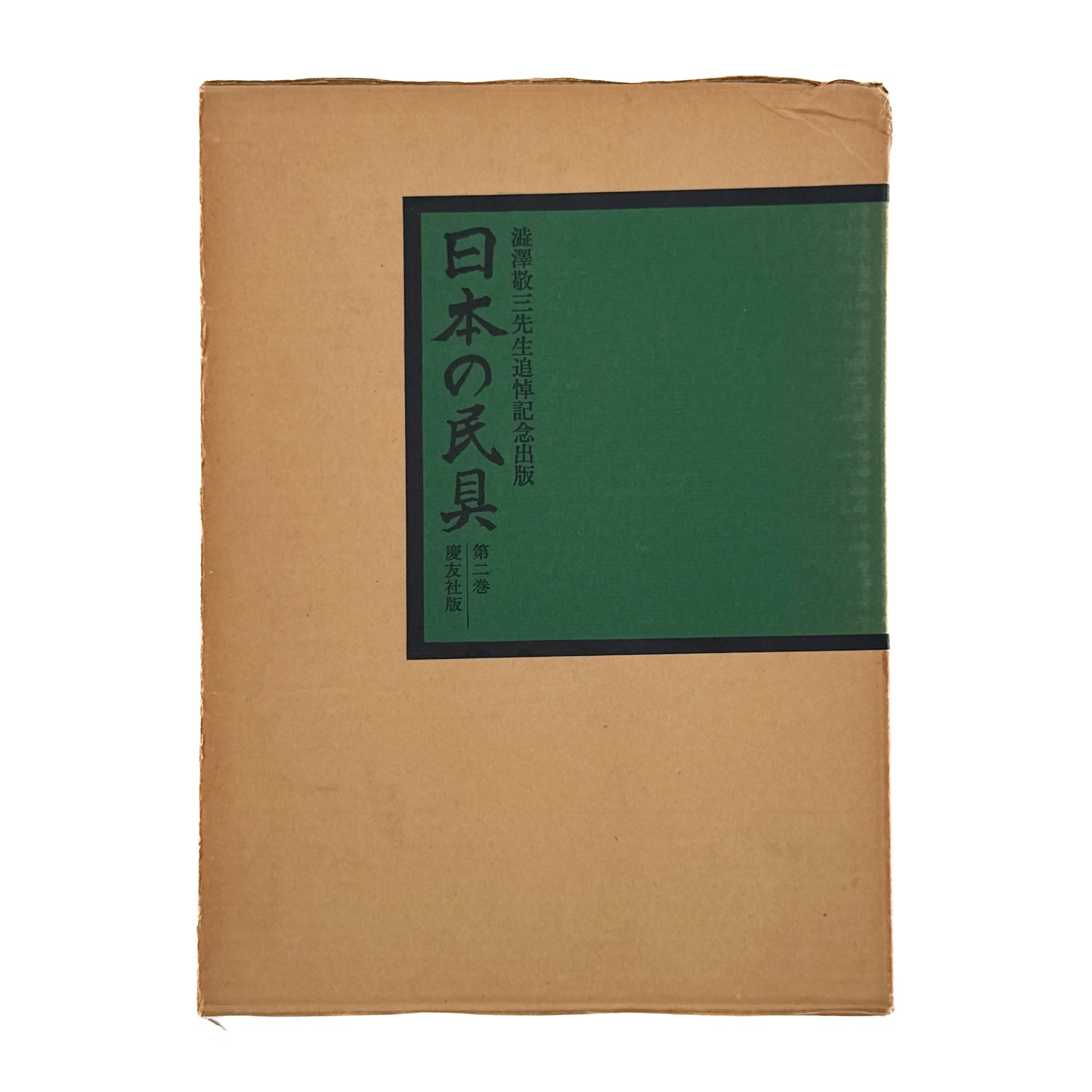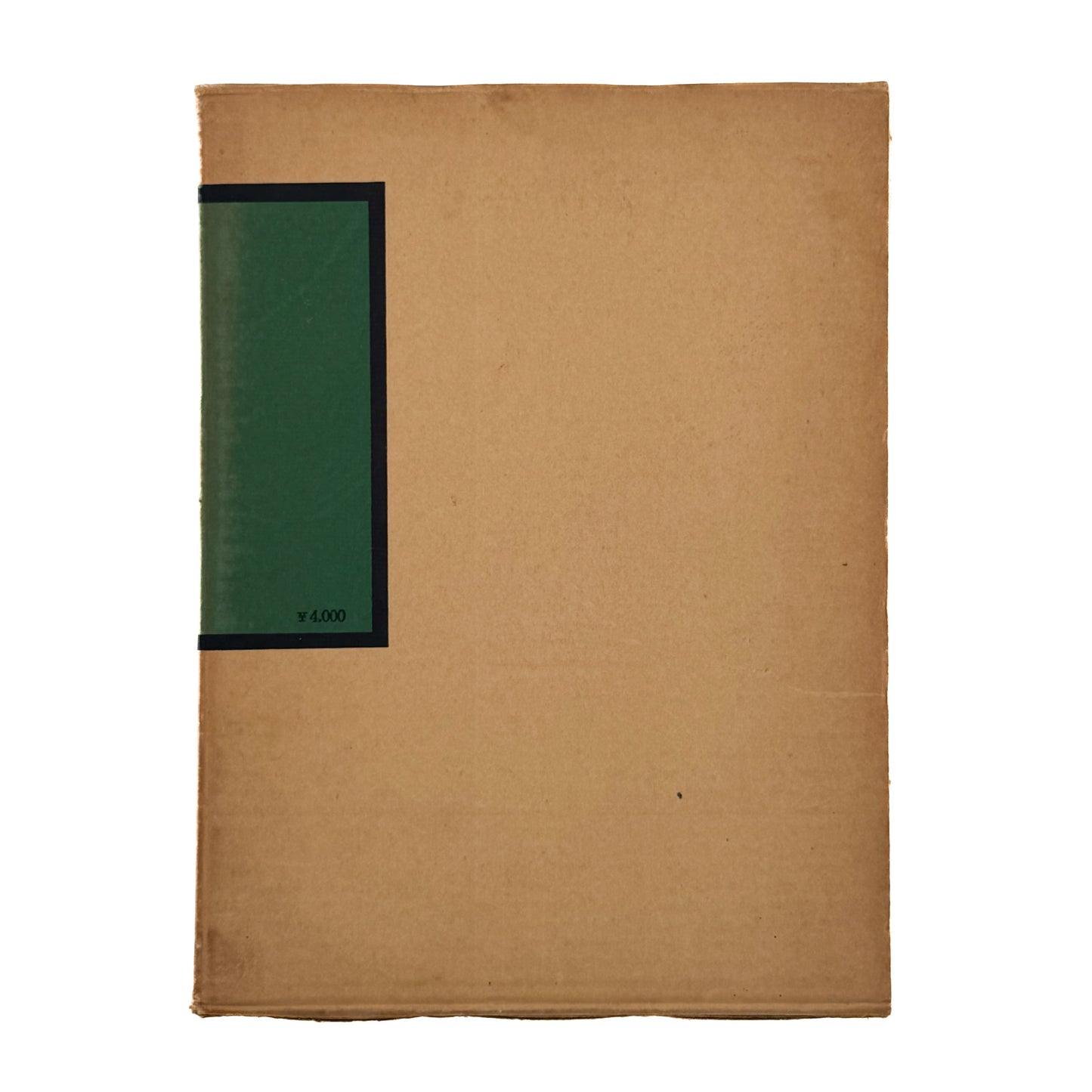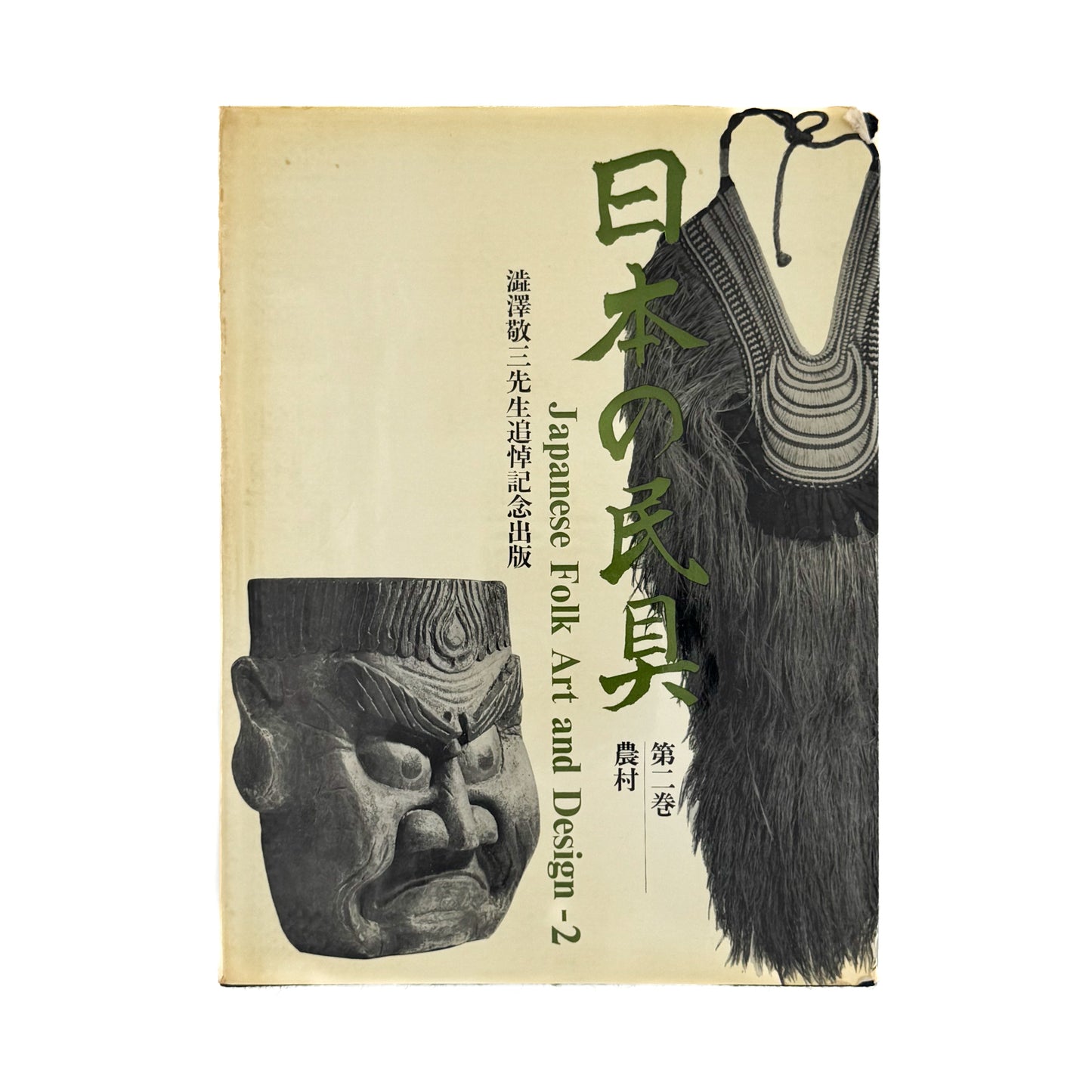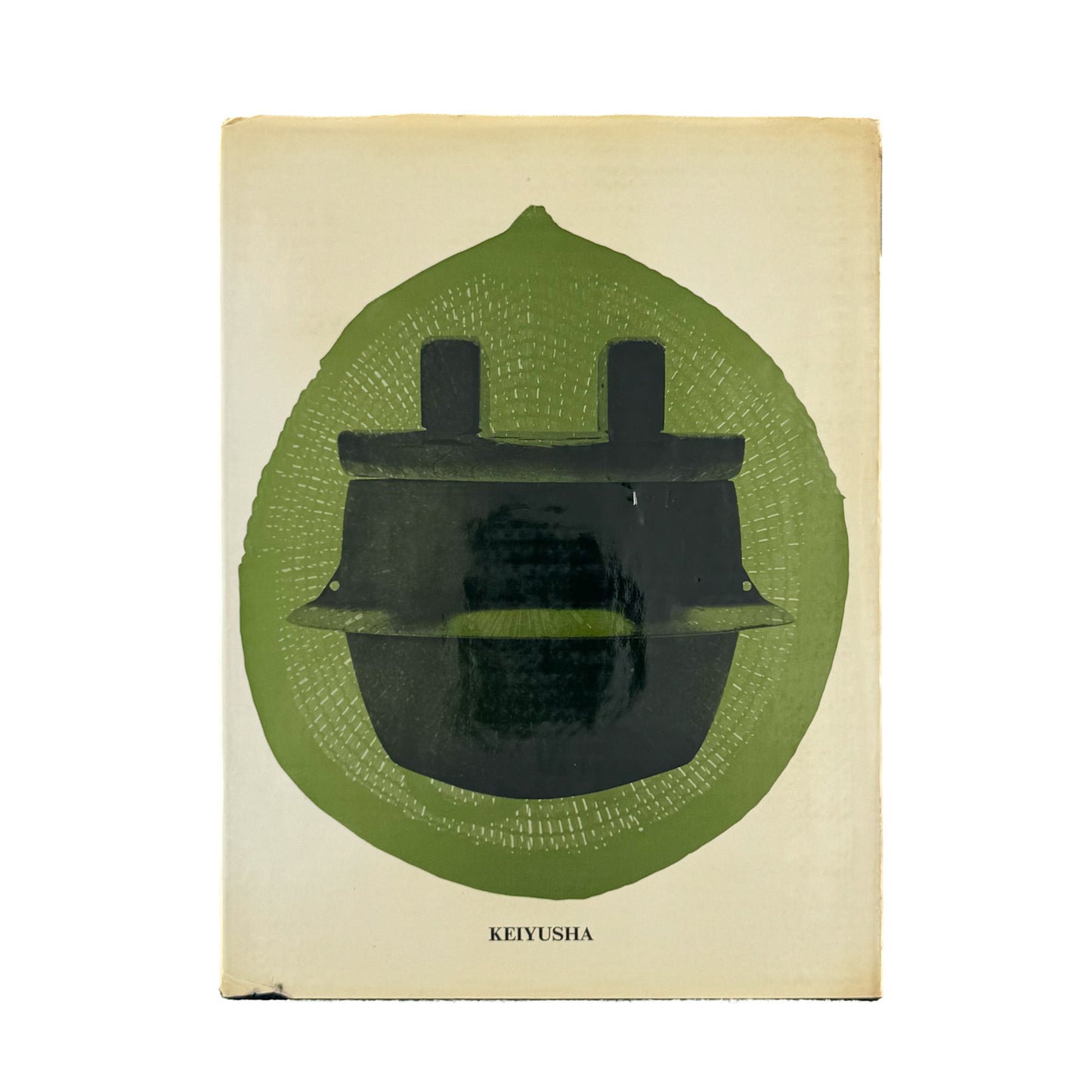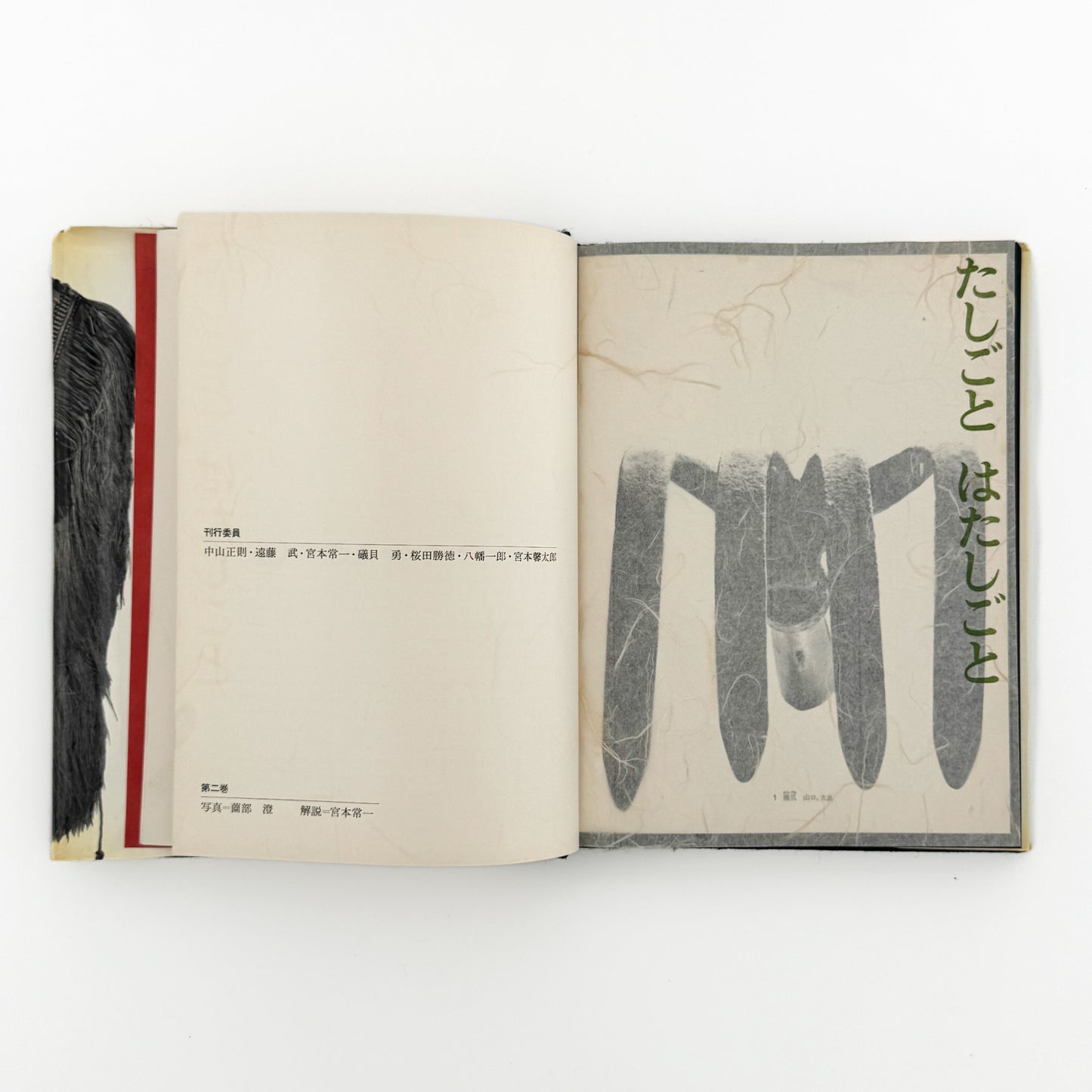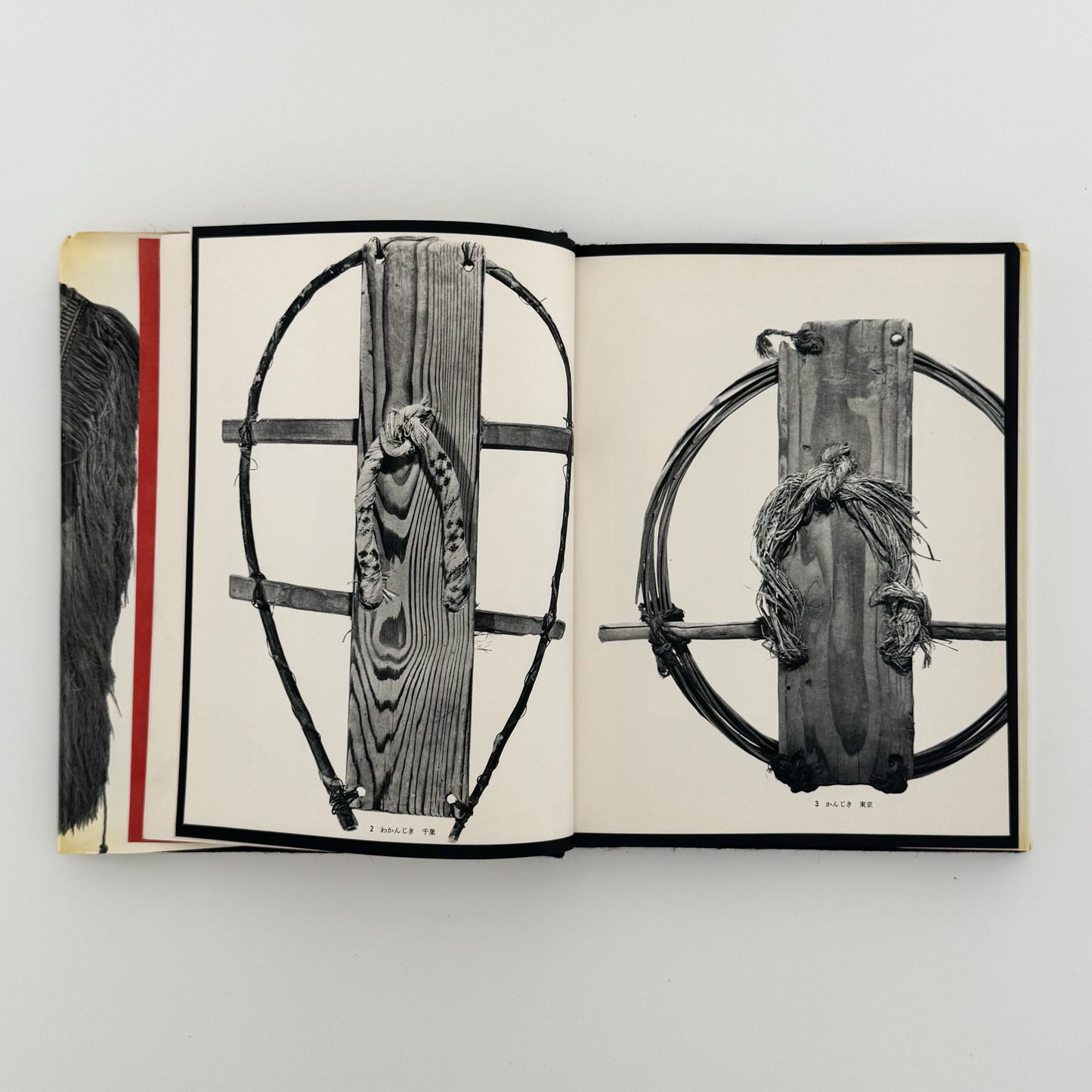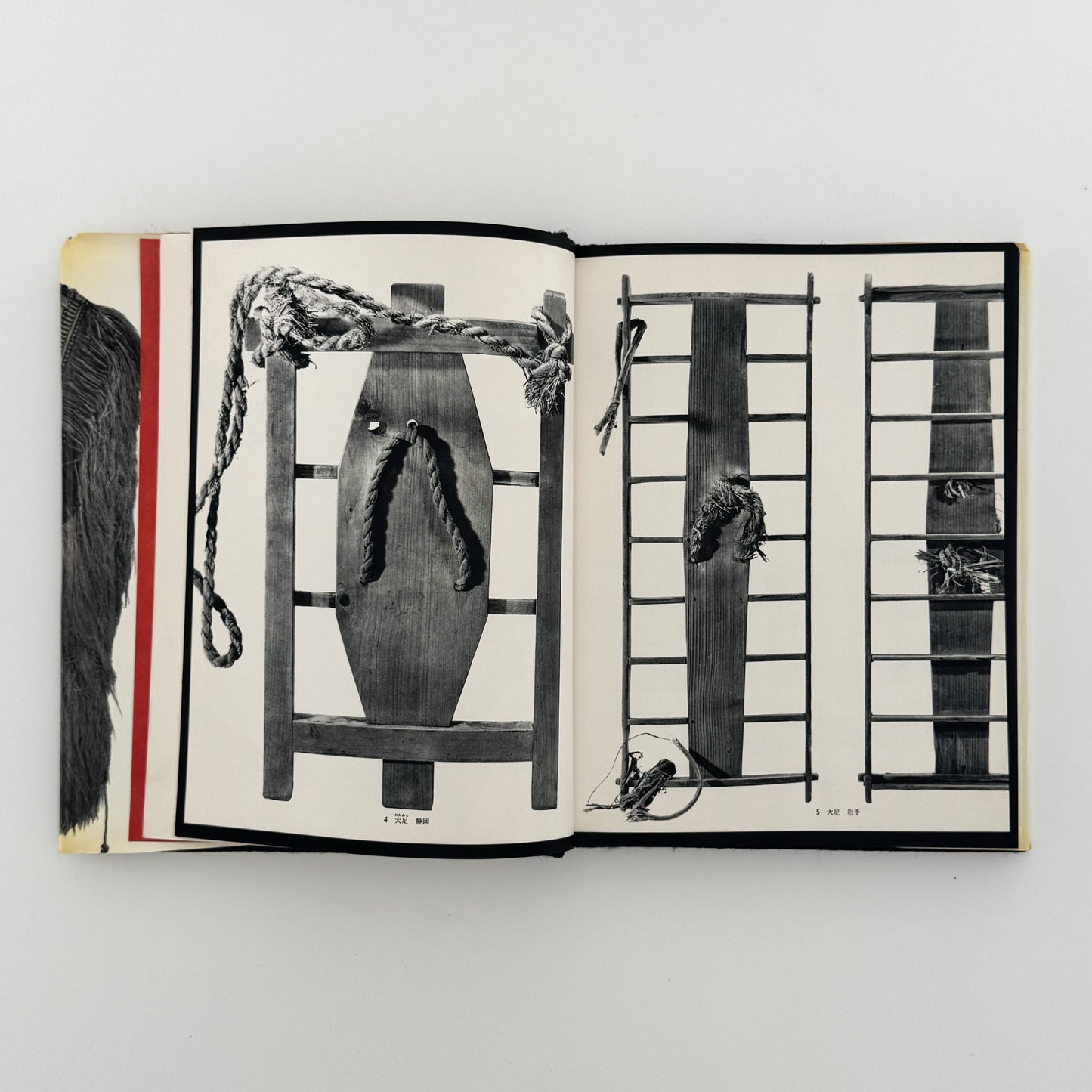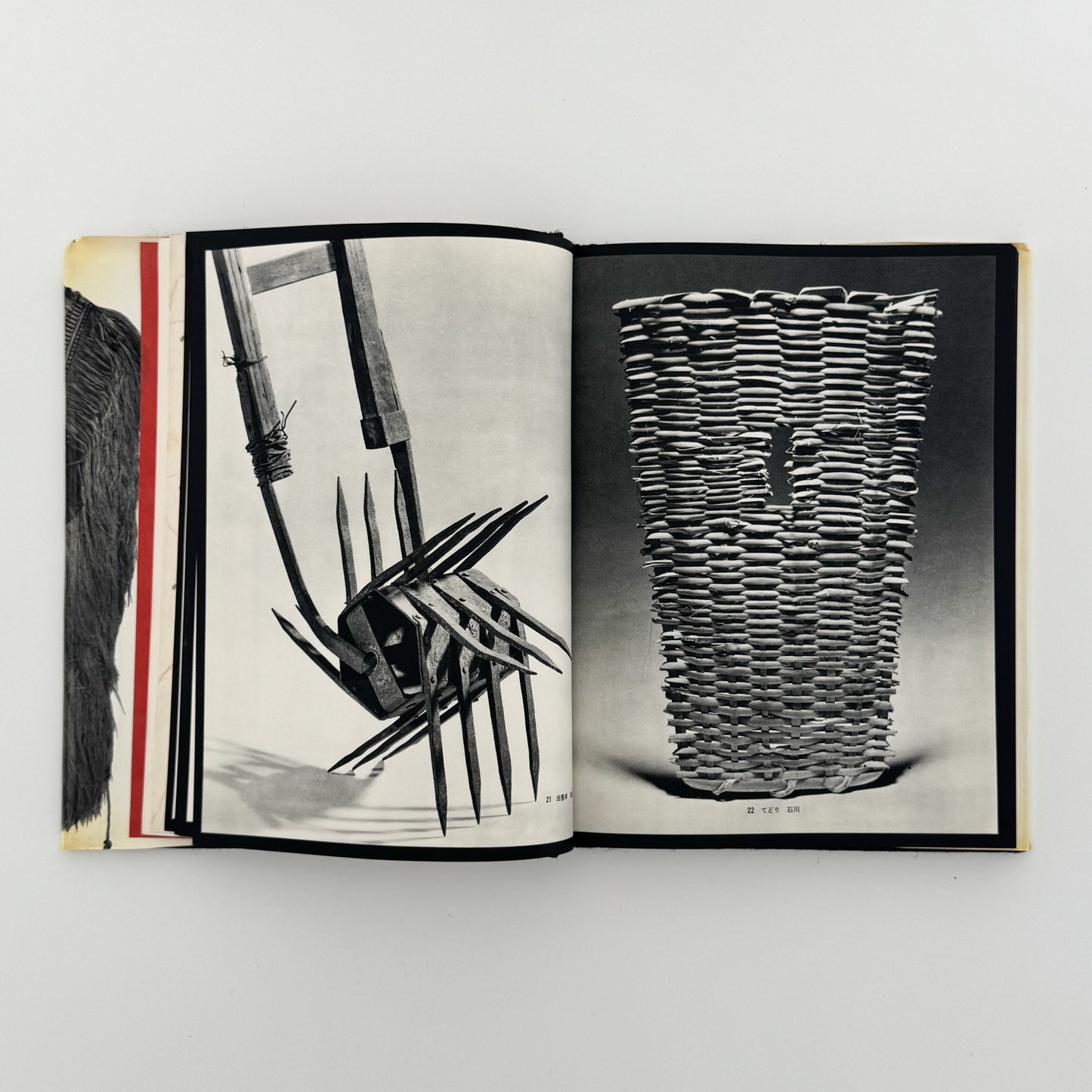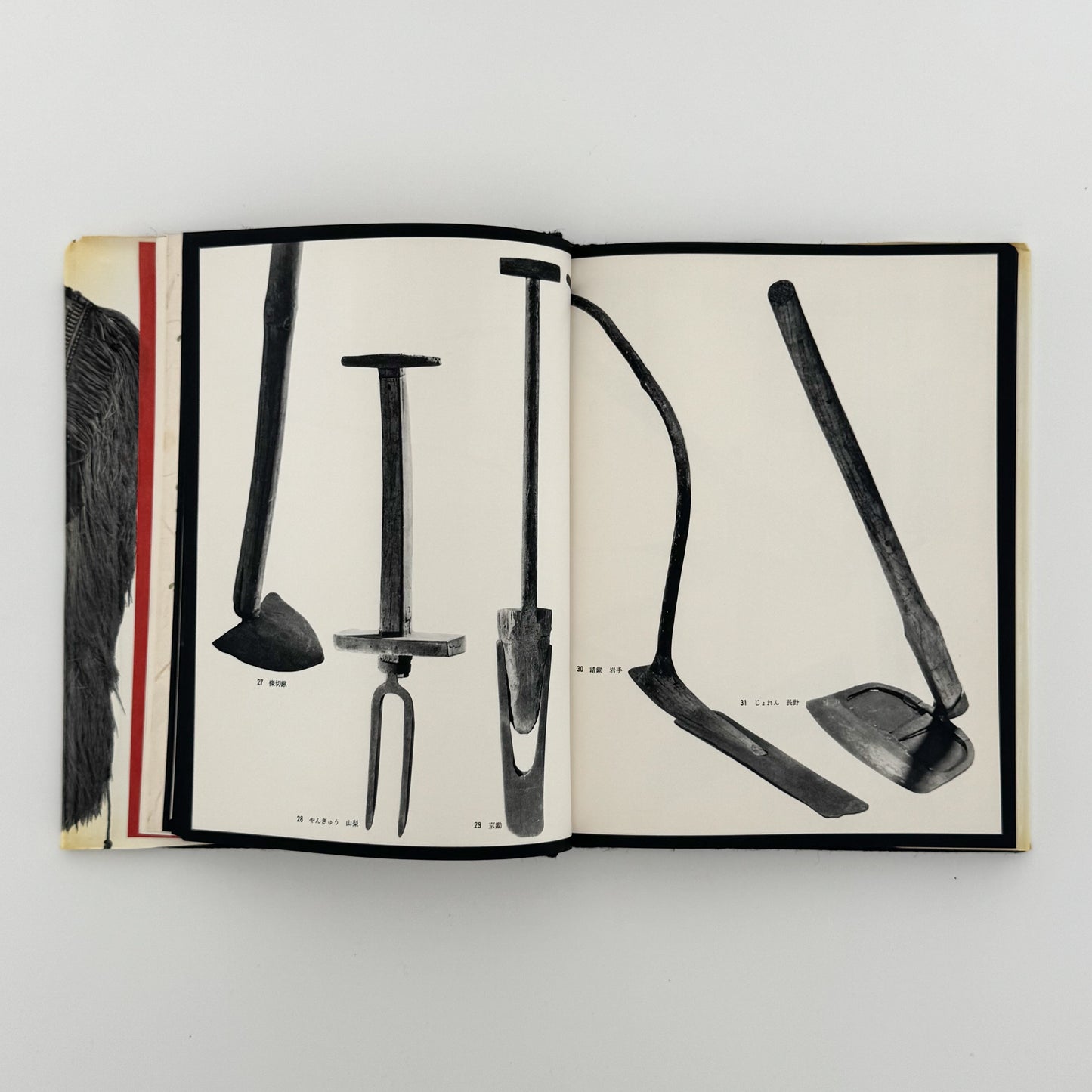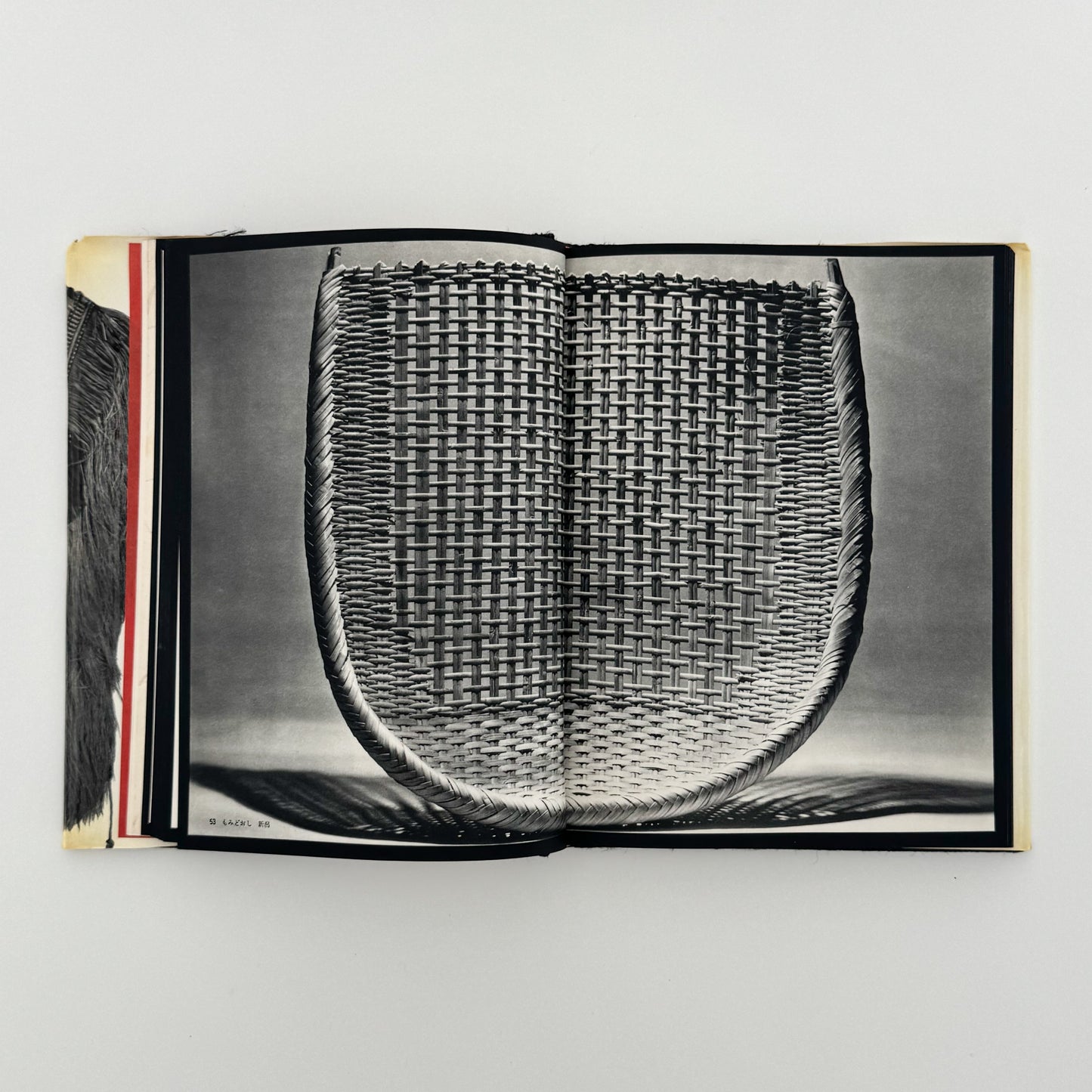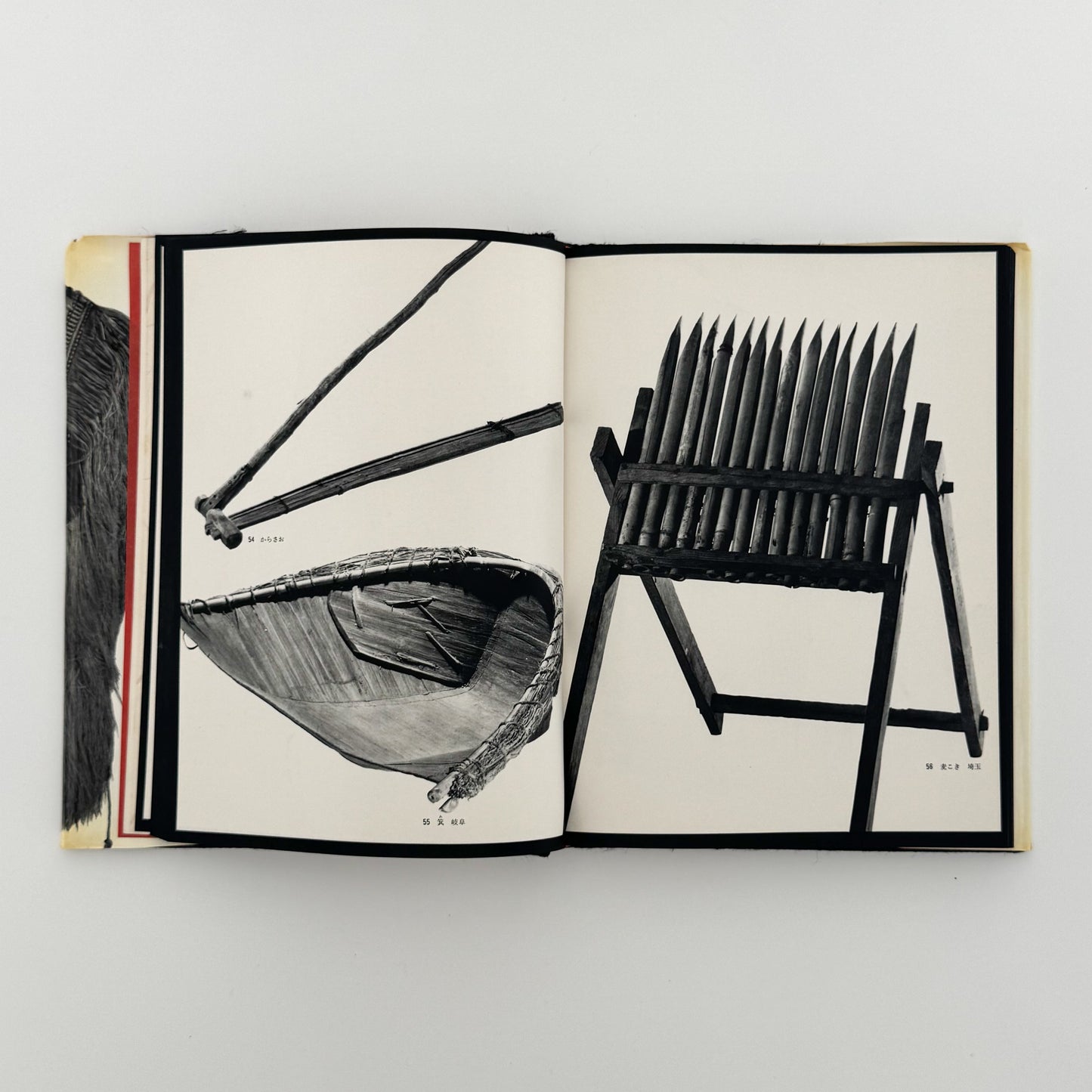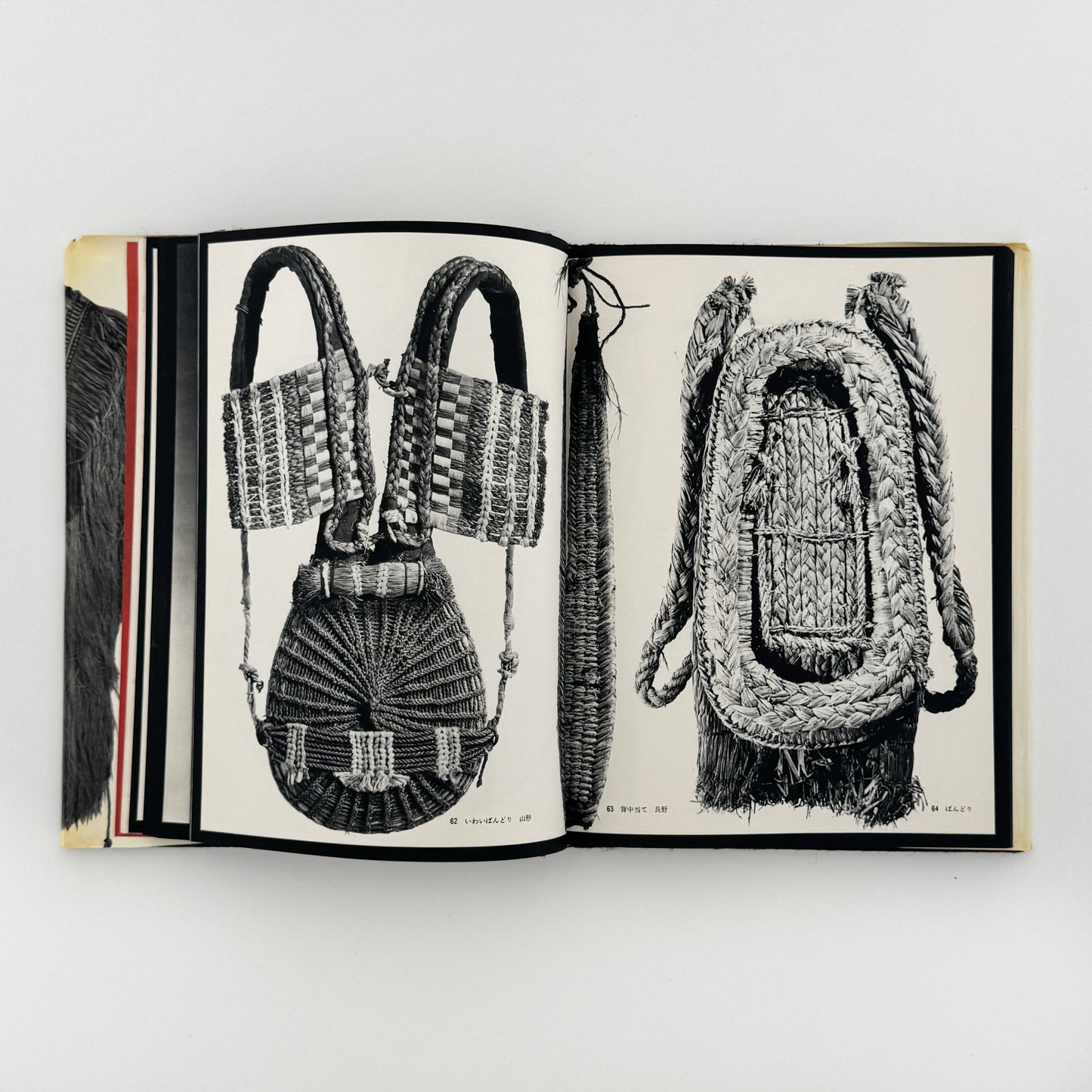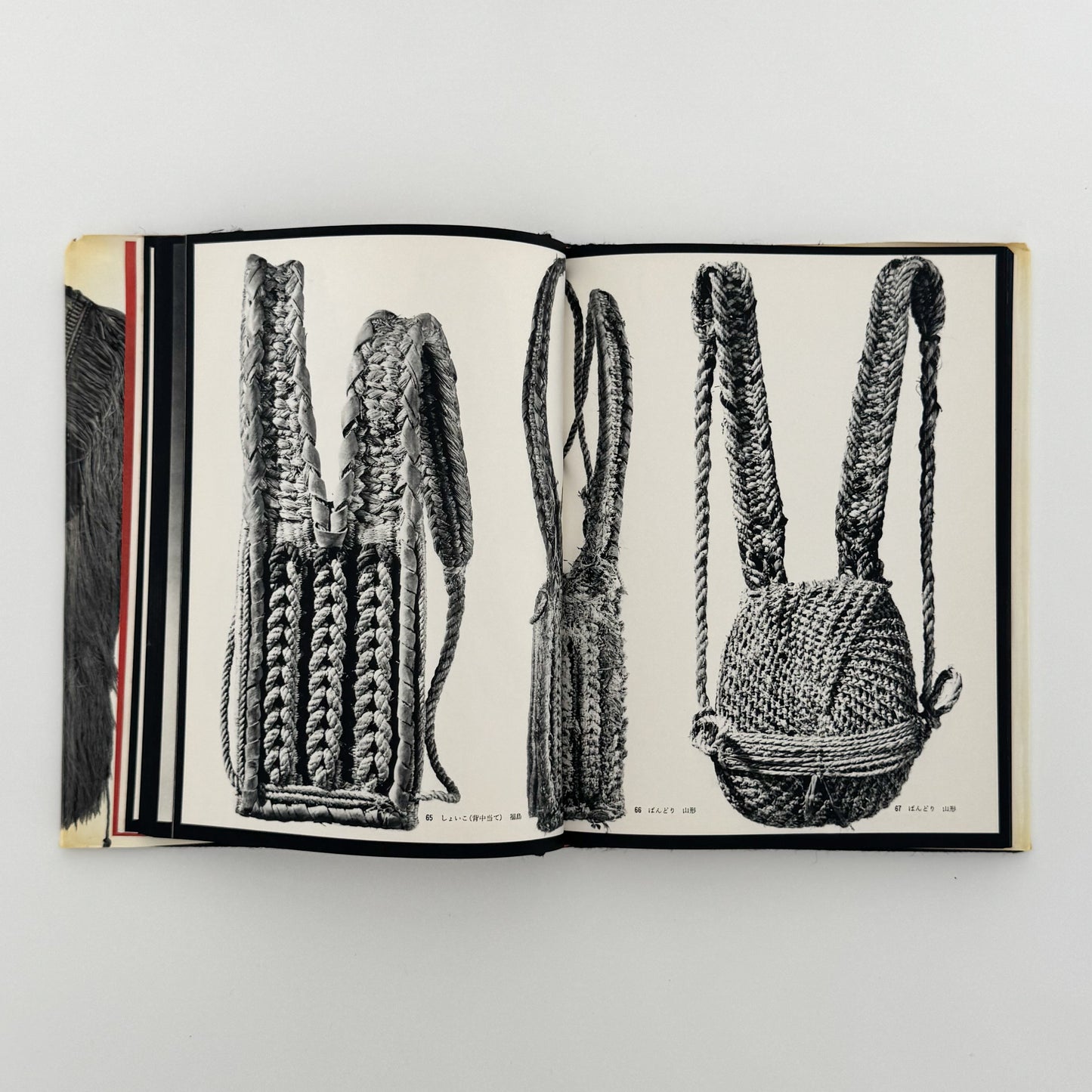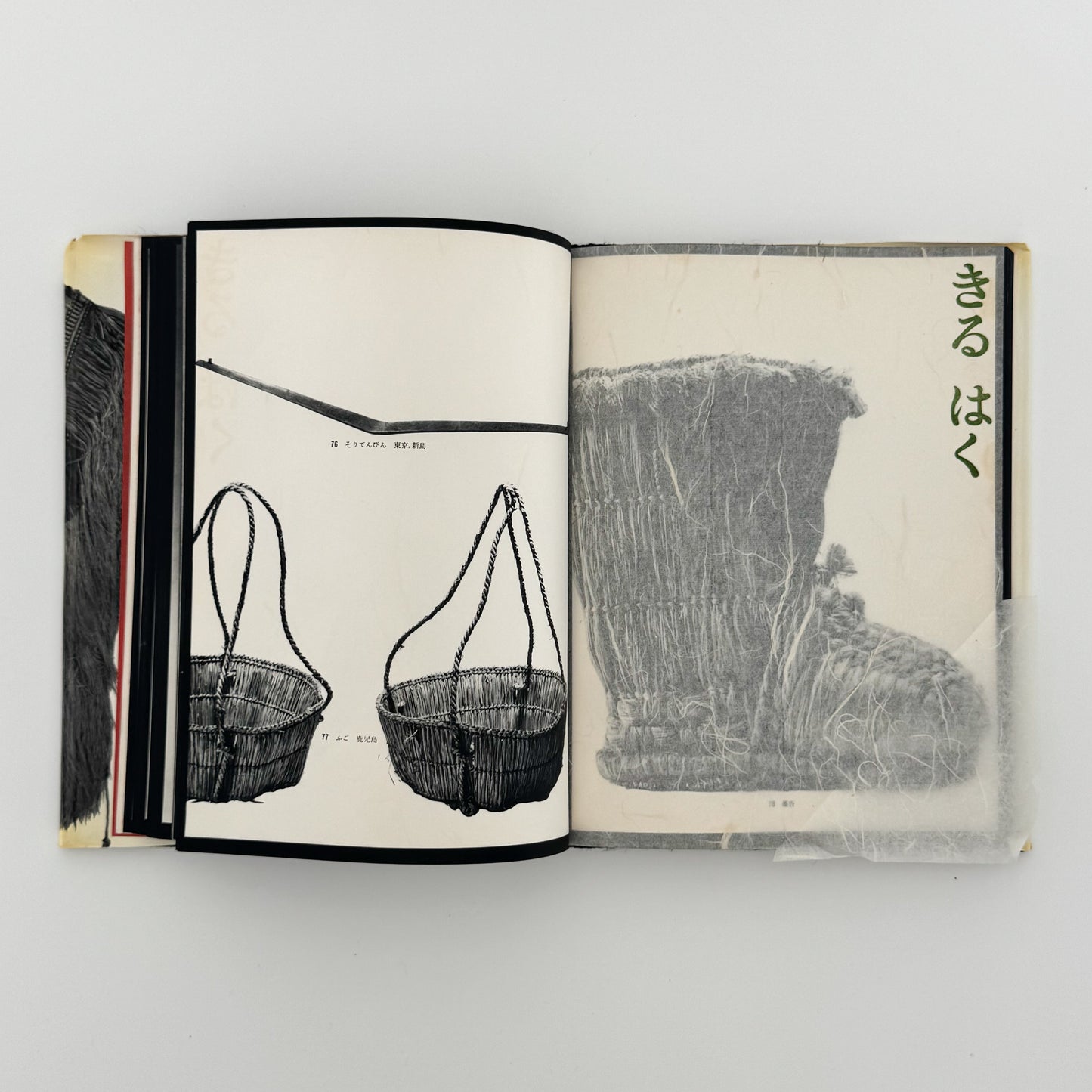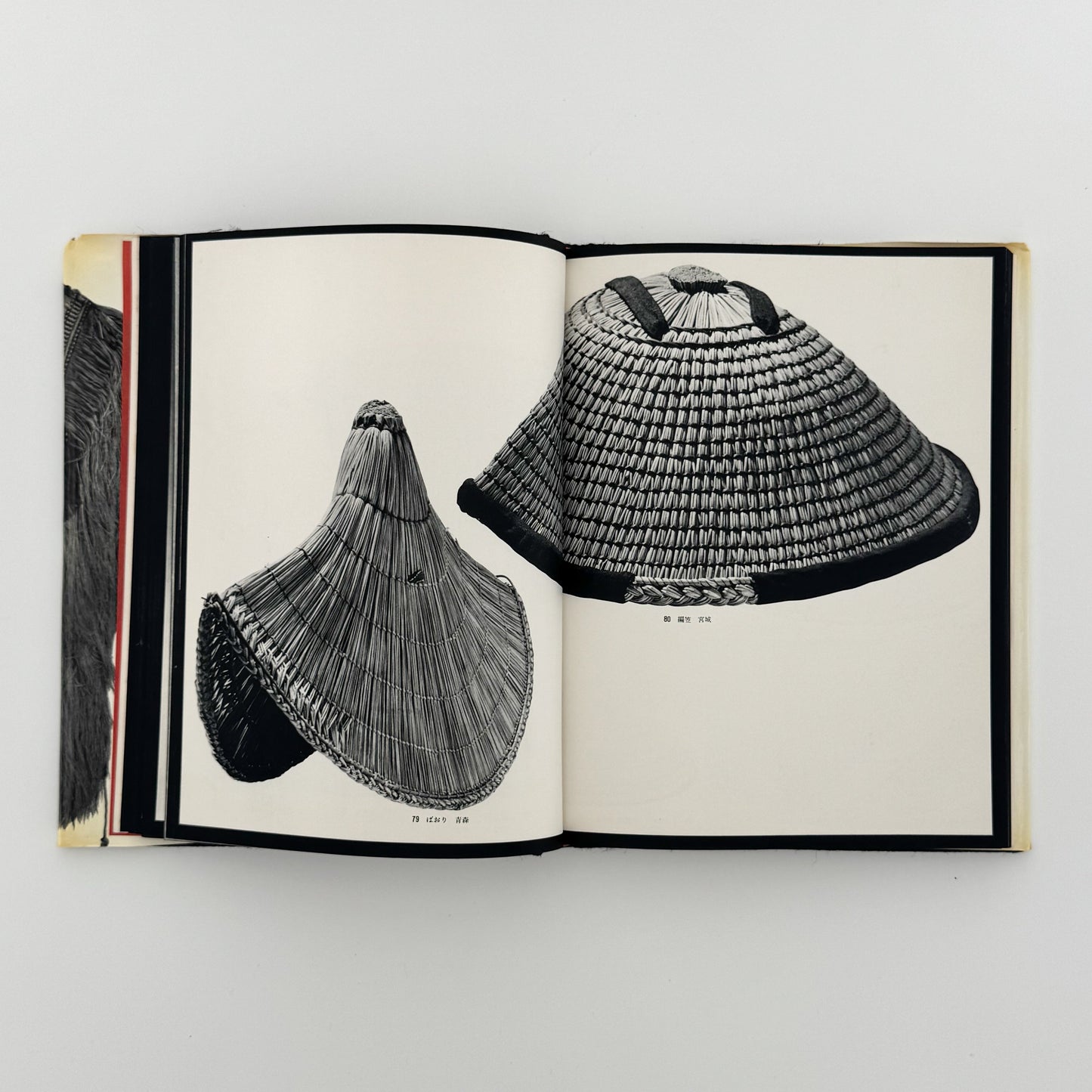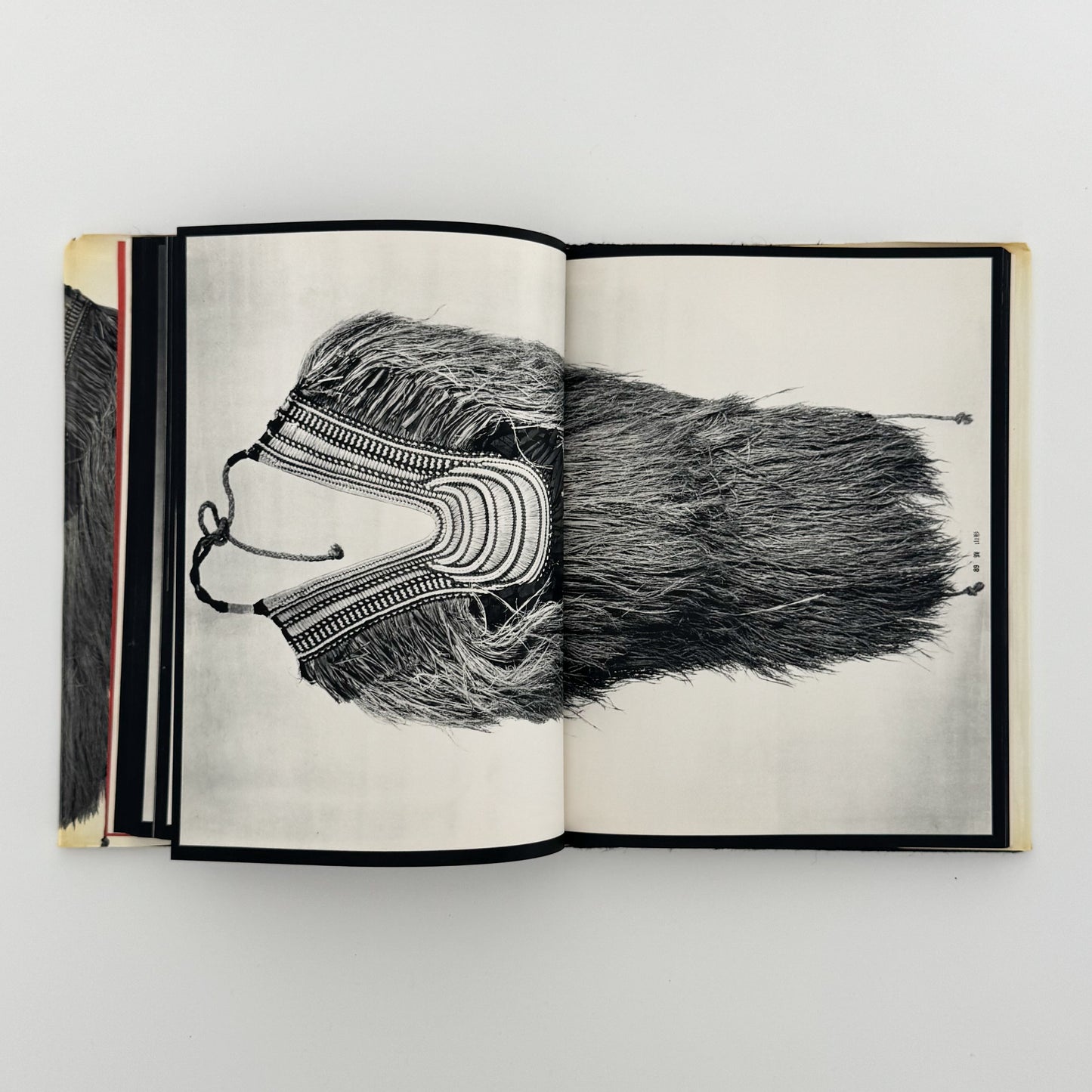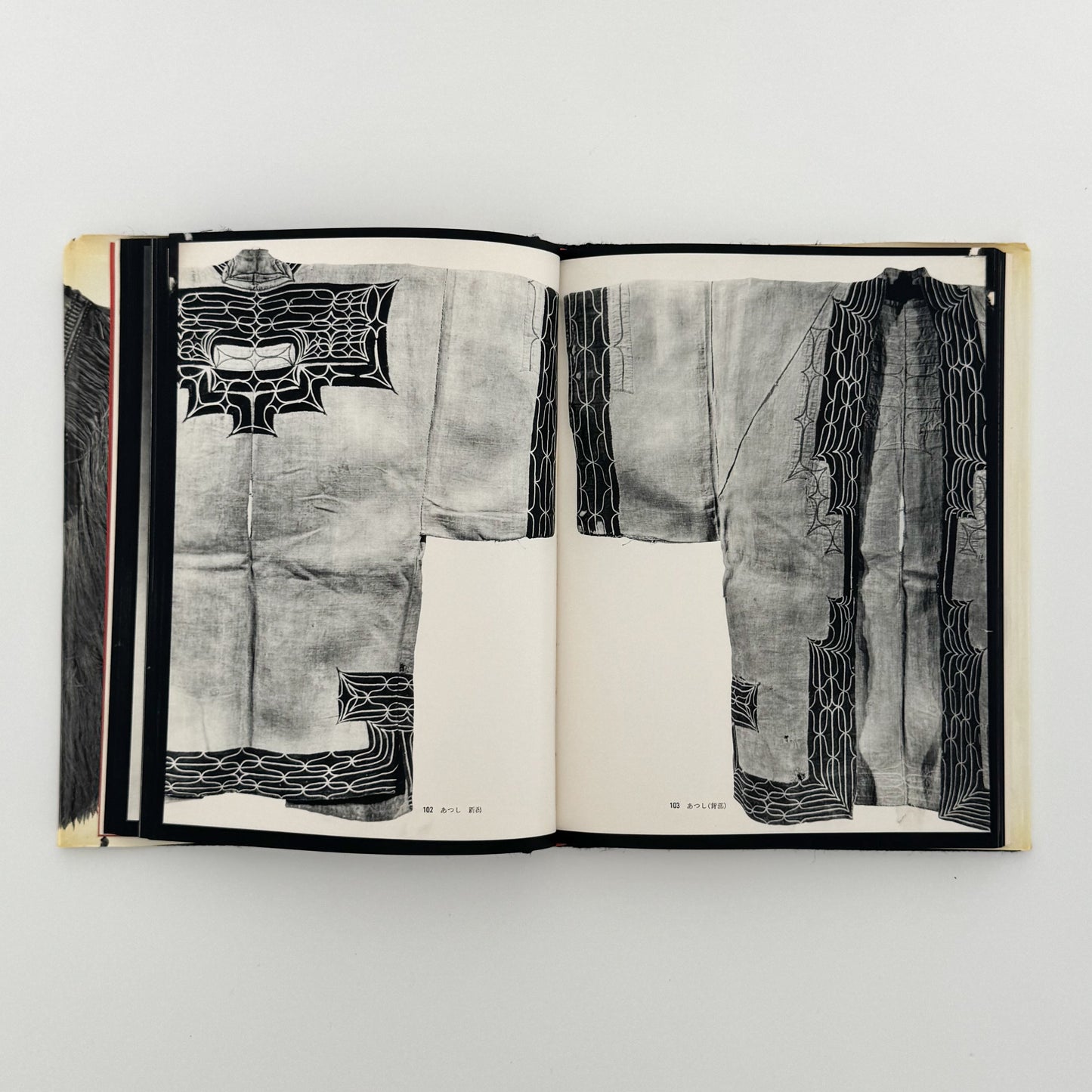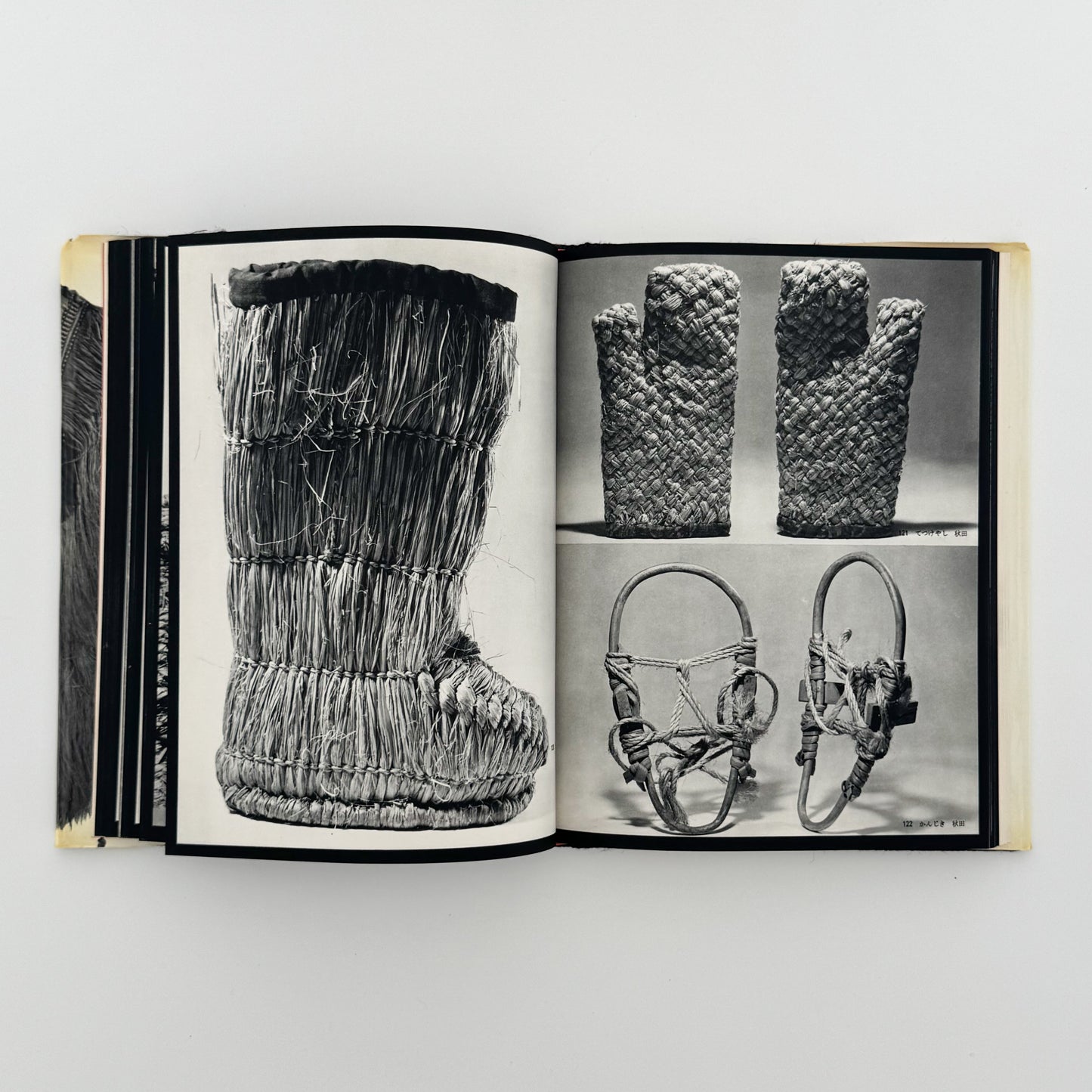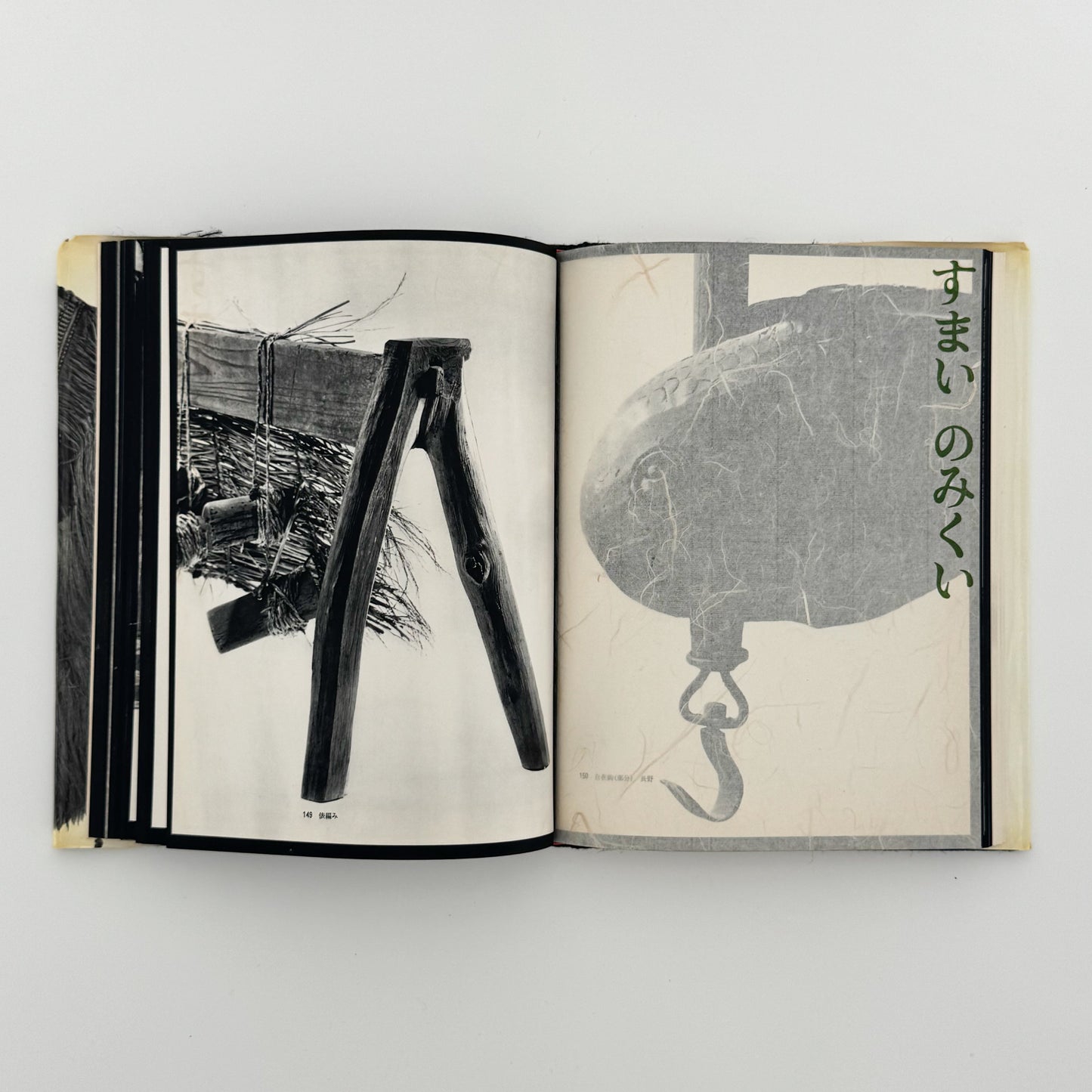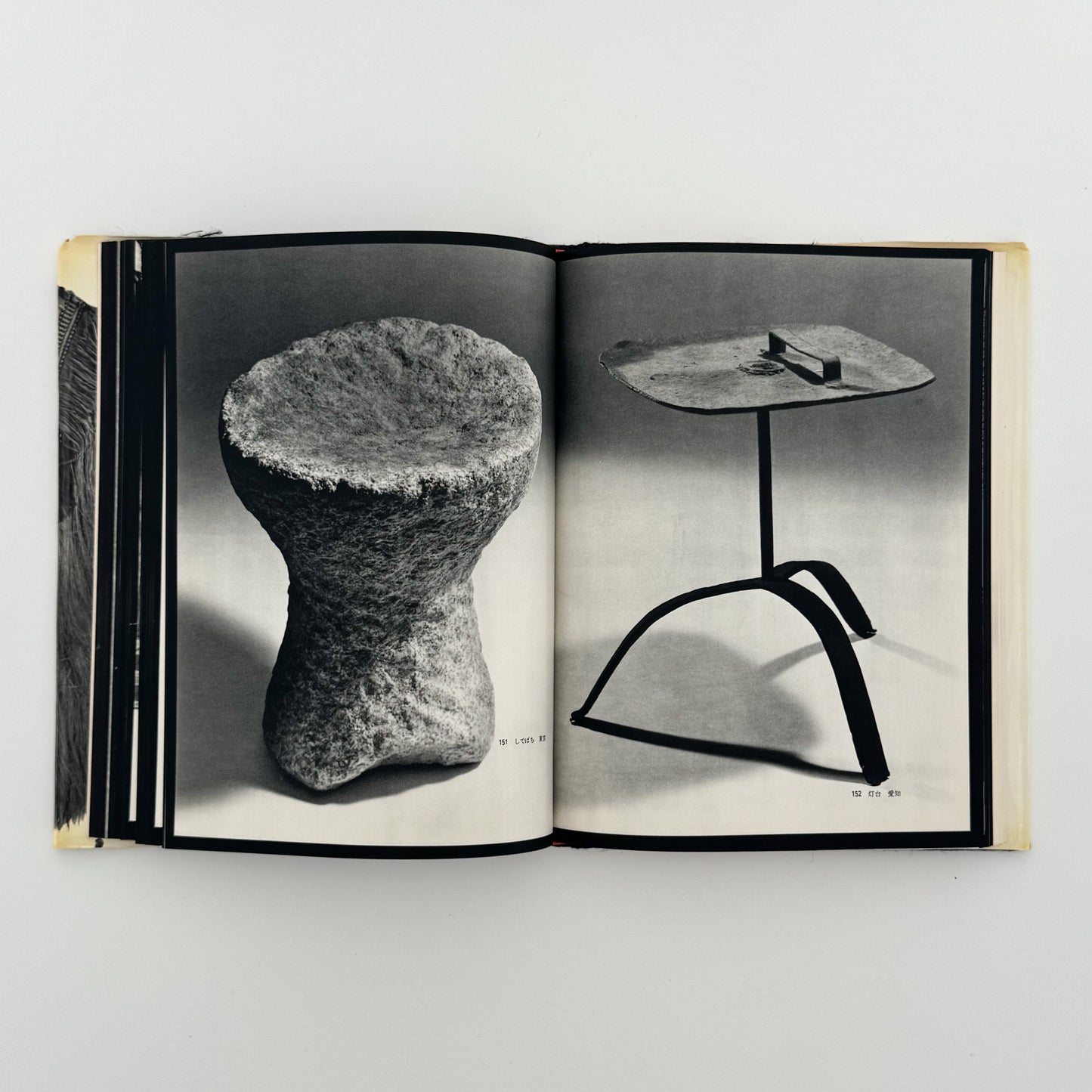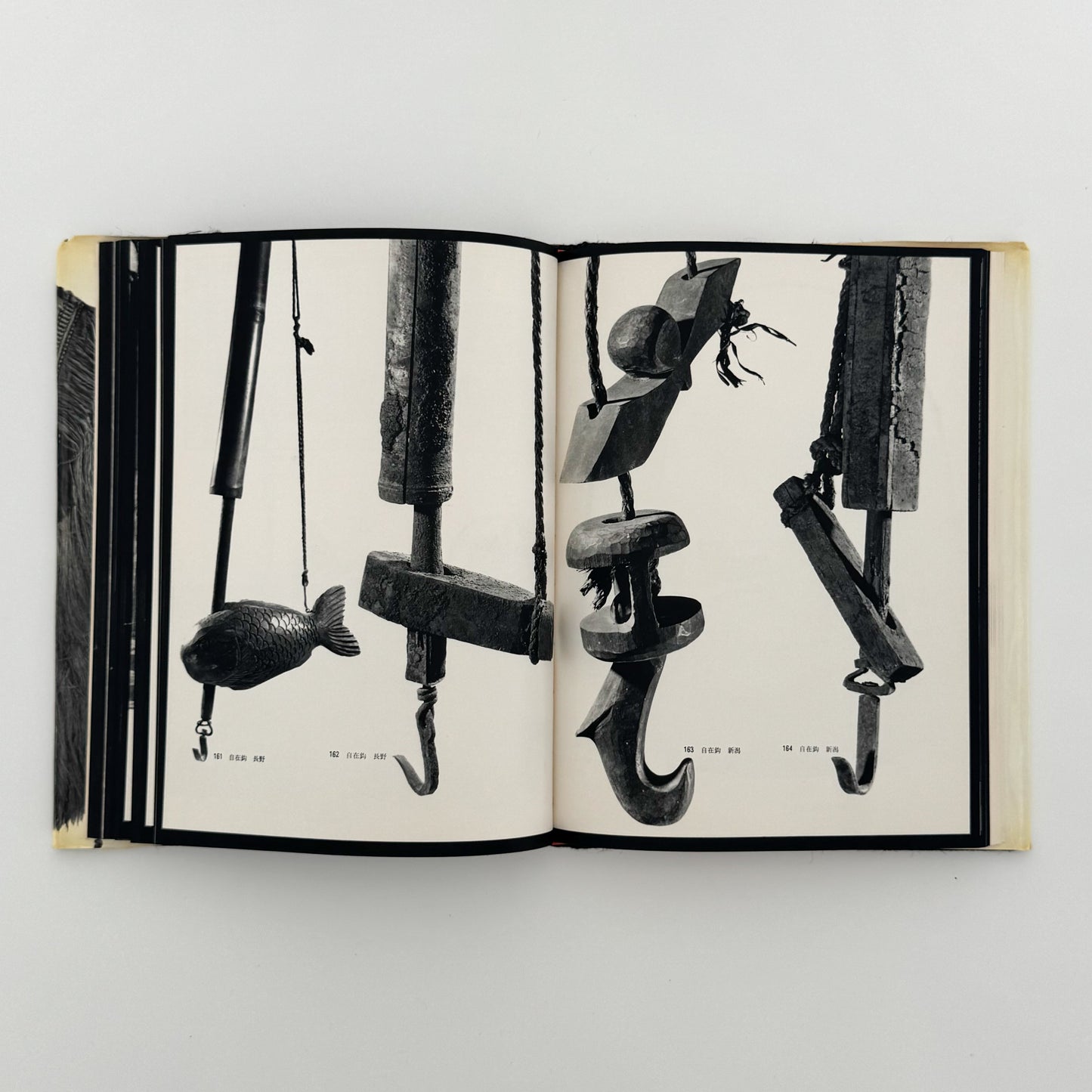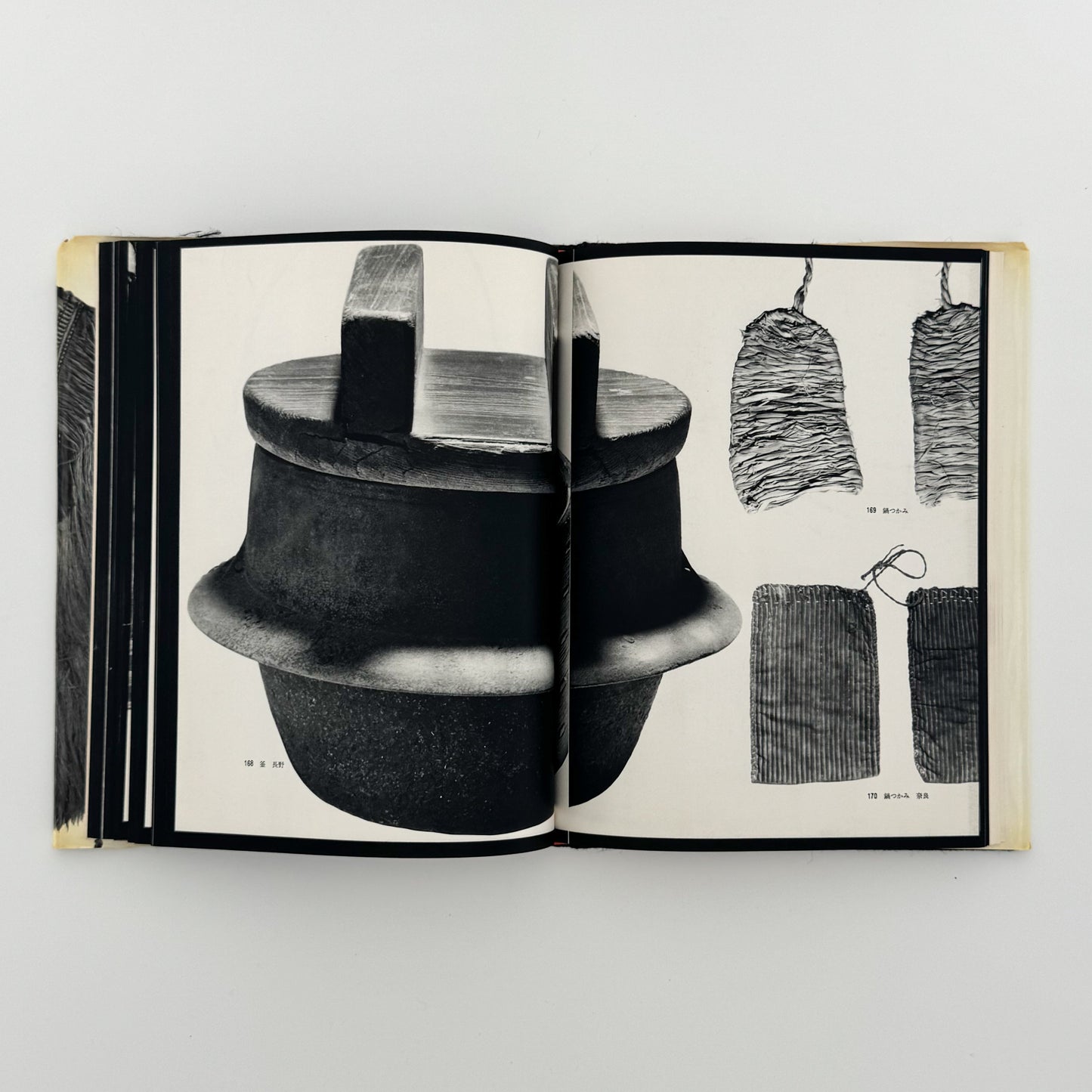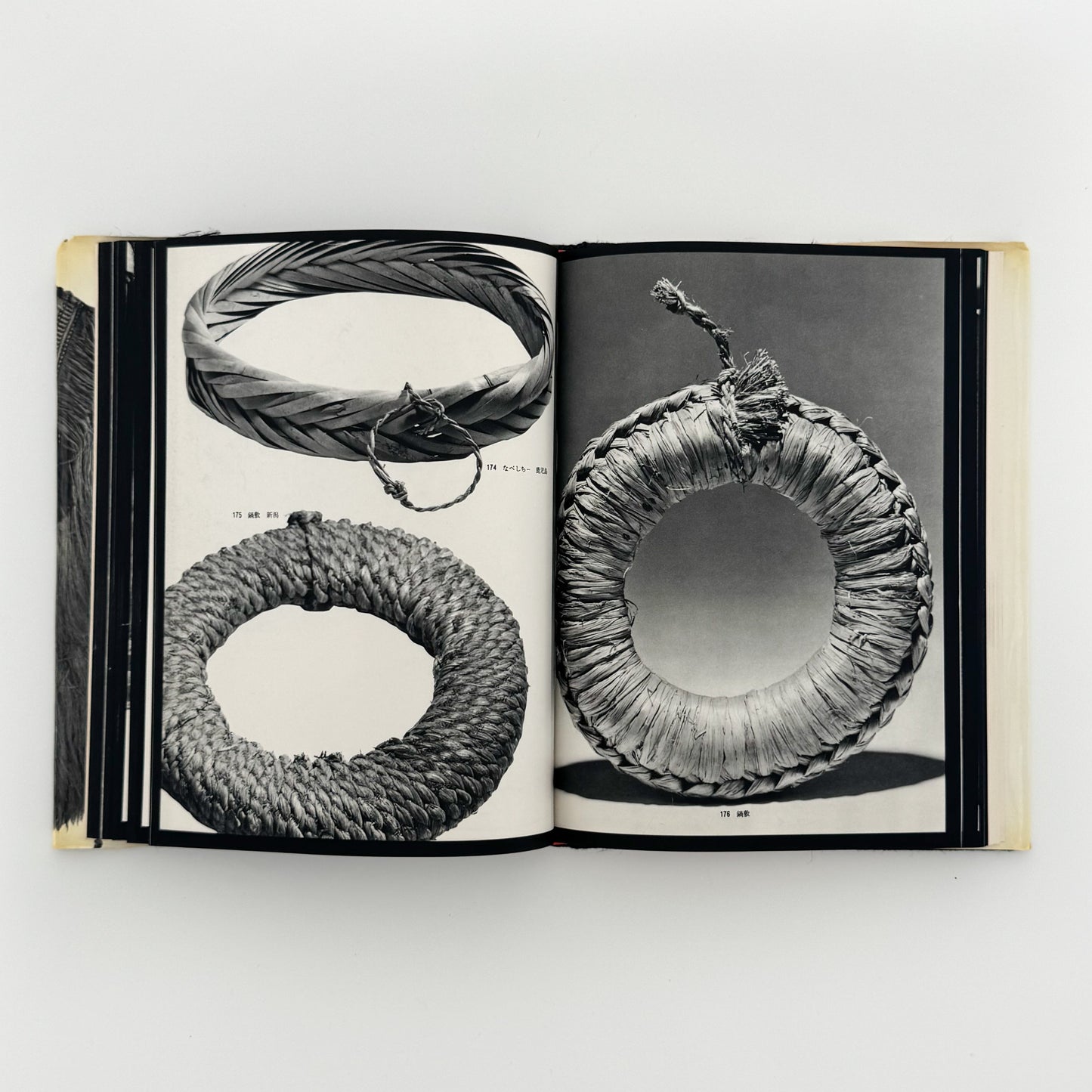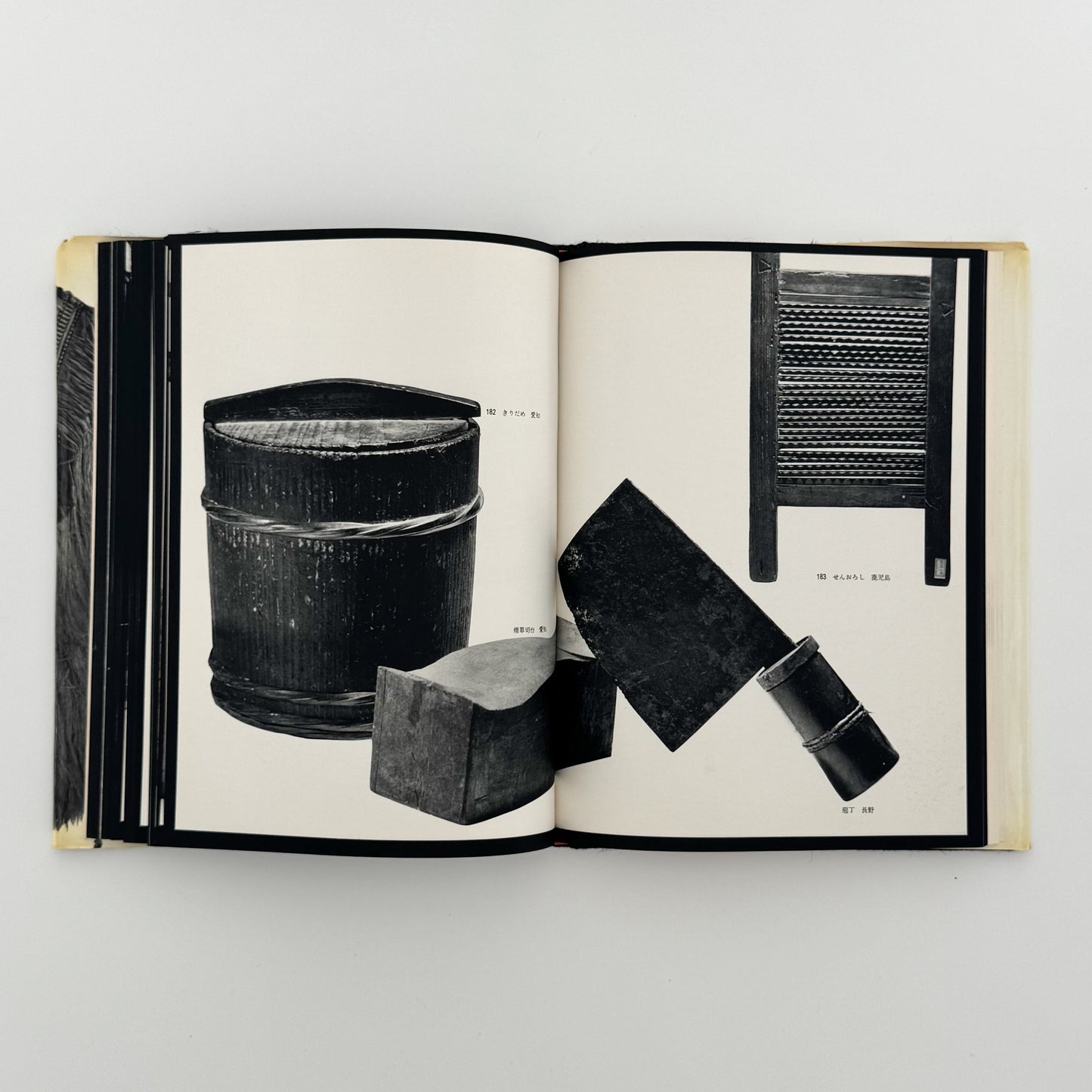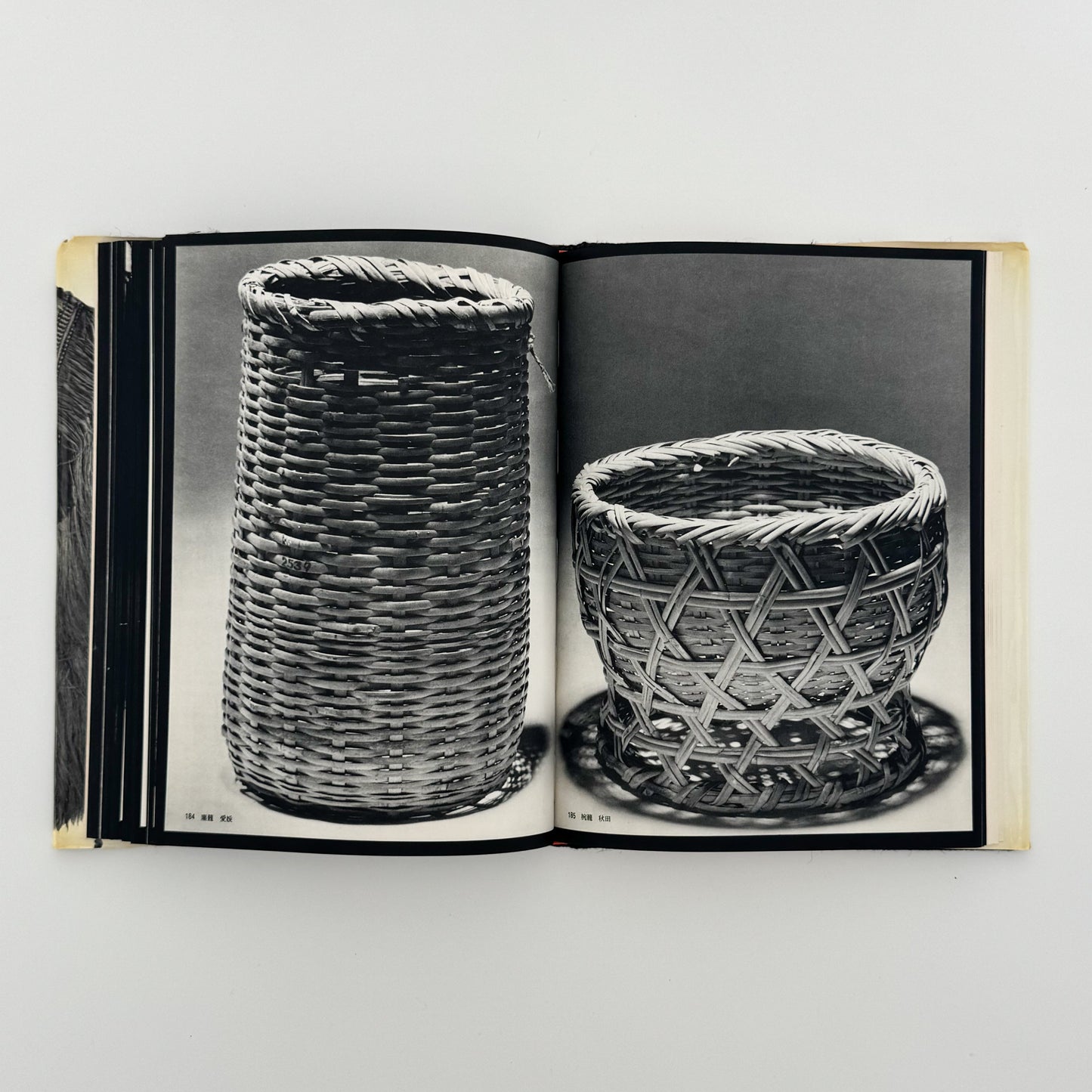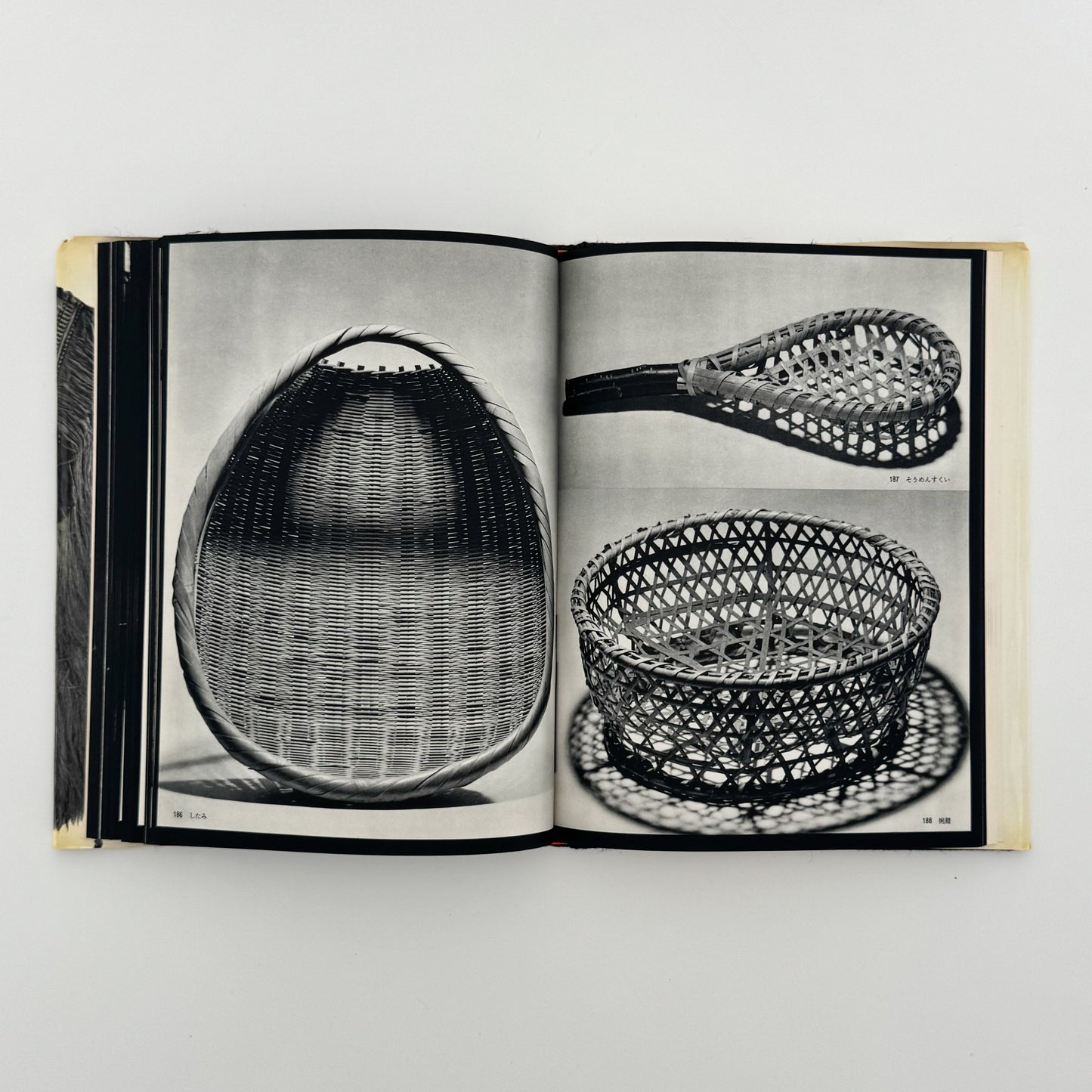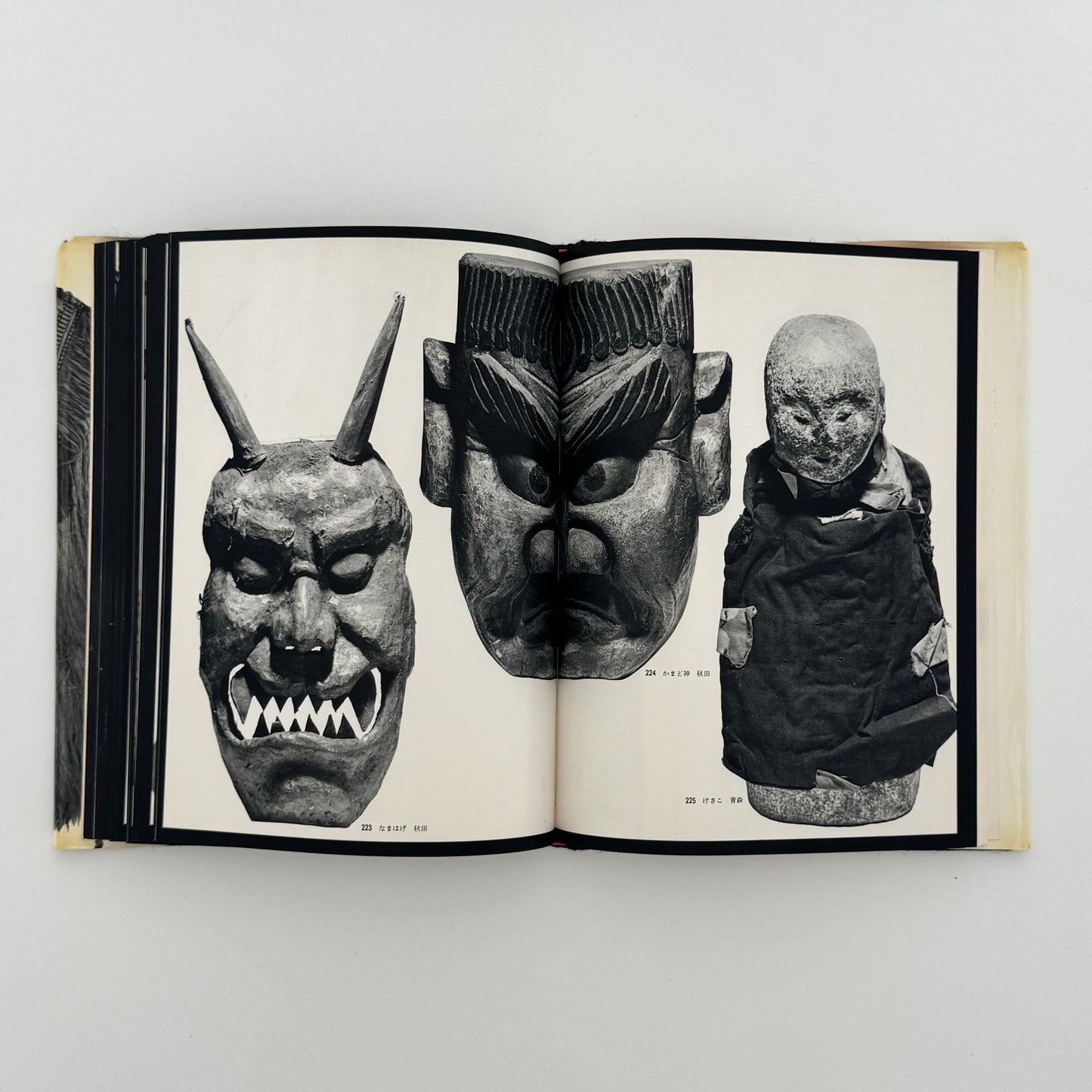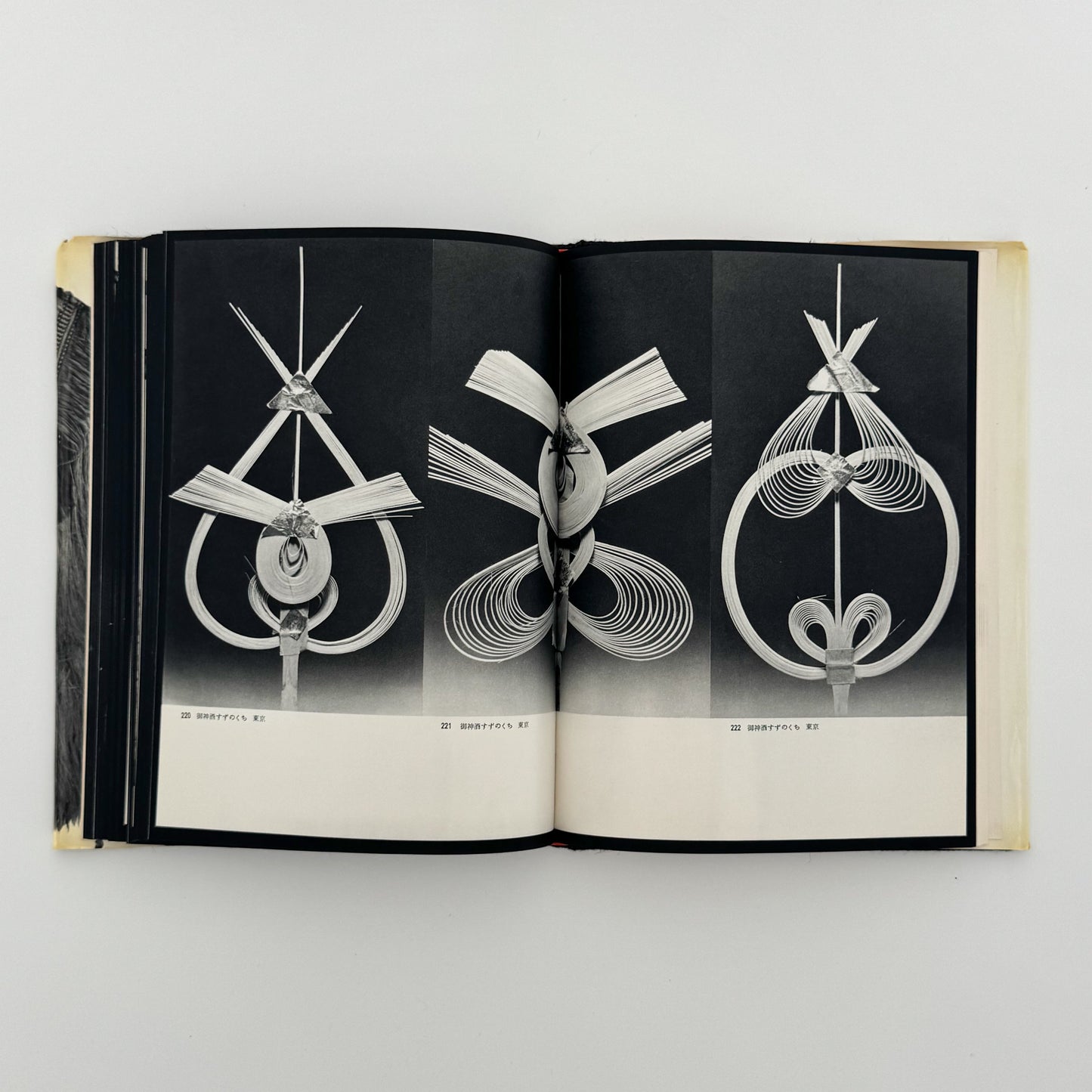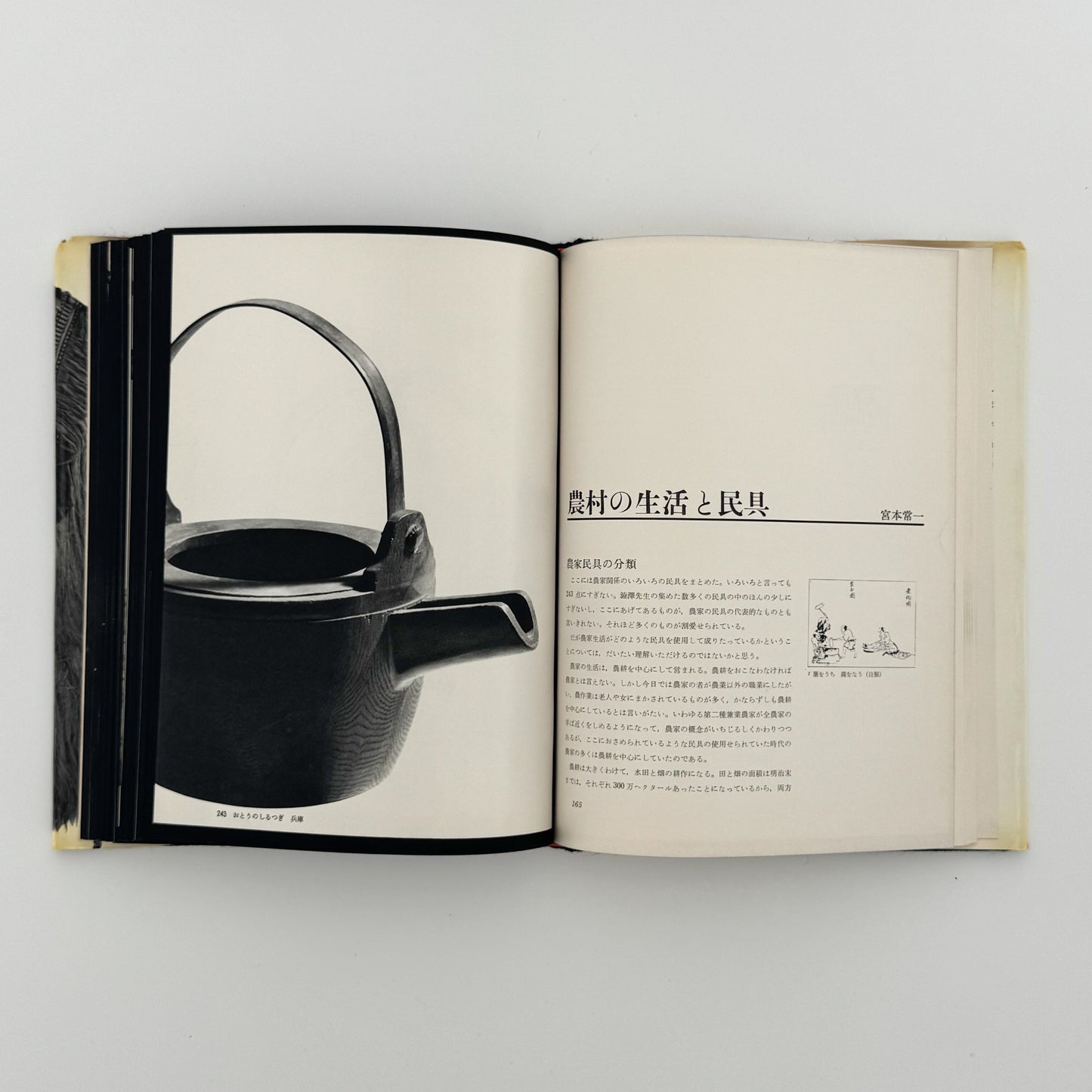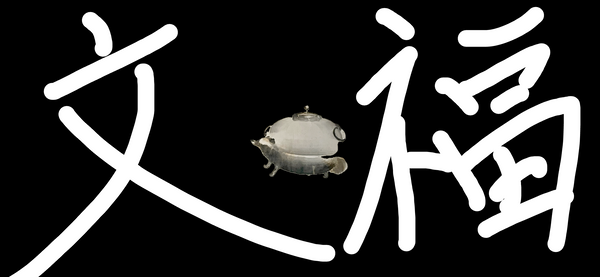Japanese Folk Tools, Volume 2: Rural Life
Japanese Folk Tools, Volume 2: Rural Life
Couldn't load pickup availability
Share
This series of books was published to commemorate the achievements of the folklorist Keizo Shibusawa.
This volume introduces a variety of folk tools passed down in Japanese rural communities, with detailed photographs and explanations. These tools—for farming, daily life, and supporting those activities—are valuable materials for recording and preserving a disappearing folk culture.
This book is the culmination of Keizo Shibazoe's lifelong dedication to collecting and researching folk tools, and is an essential resource for anyone interested in folklore, history, and cultural property research.
The printing method used is gravure printing, which is characterized by its deep, rich monochrome reproduction.
It expresses the texture and weight of folk tools without fail, and goes beyond mere documentary photographs to bring out their sculptural beauty.
[Title] In Memory of Professor Keizo Shibusawa: Commemorative Publication - Japanese Folk Tools, Volume 2: Rural Life, Keiyusha Edition
[Publisher] Keiyusha
[Publication Date] August 10, 1965 (Showa 40)
[Number of pages] 206 pages
[Size] External dimensions: approx. 30.4 x 22.4 x 3.3 cm, 1.51 kg
[Format] Hardcover
[Title Reading] Shibusawa Keizo Sensei Tsuitou Kinen Shuppan: Nihon no Mingu Dai-Nikan Nōson Keiyūsha Ban
[Author(s), Editor(s), etc.] Isogai Isamu, Sakurada Katsunori/Author(s), Sonobe Sumi/Photographer, Tagawa Seiichi/Book Design & Layout
[Printing] Gravure Seikosha, Chuo Seihan Printing / Printing, Matsumoto Bookbinding / Binding
[ISBN] None
[Condition] Used [ 3 ] Below average (overall age-related yellowing, box damage/minor stains, cover damage, the main body is relatively good)
[Accessories] Slipcase
[Published in]
[Related Exhibitions]
Isamu Isogai (1905-?) (Currently being verified)
Born in Hiroshima City, Hiroshima Prefecture in 1905.
After graduating from the Mechanical Engineering Department of Kobe Higher Technical School, he worked in industrial education while also belonging to the Attic Museum (Japanese Folk Culture Research Institute) run by Keizo Shibuya, where he engaged in research on folk crafts.
Sakurada Katsunori (1903-?) (Currently being verified)
Born in Sendai City, Miyagi Prefecture in 1903.
Graduated from the History Department of Keio University. In 1935, became a member of Attic Museum and mainly conducted research related to farmers. In 1955, mainly conducted research related to fishing villages.
In 1955, he was appointed Director of the Fisheries Museum of the Fisheries Agency.
His major works include "Folk Customs of Fishing Villages" (Issen-sha) and "Fishermen" (Rikujin-sha).
Sonobe Kiyoshi ( 1921–1996 )
Born in Tsukijima, Tokyo in 1921.
In 1943, he joined the publishing house Tosho-sha and studied under Ihei Kimura.
After the war, he worked for Sun News Photos and Iwanami Film Studio, and also participated in the photography for the "Iwanami Photo Library."
After becoming independent in 1957, he traveled throughout the country, recording the culture, customs, and daily lives of the people.
Known for works such as "Kitakami River" and "Lost Landscapes of Japan," he also received the Japan Photographic Society Award.
Throughout his life, he continued to photograph the original landscapes, folk culture, and local culture of Japan.
